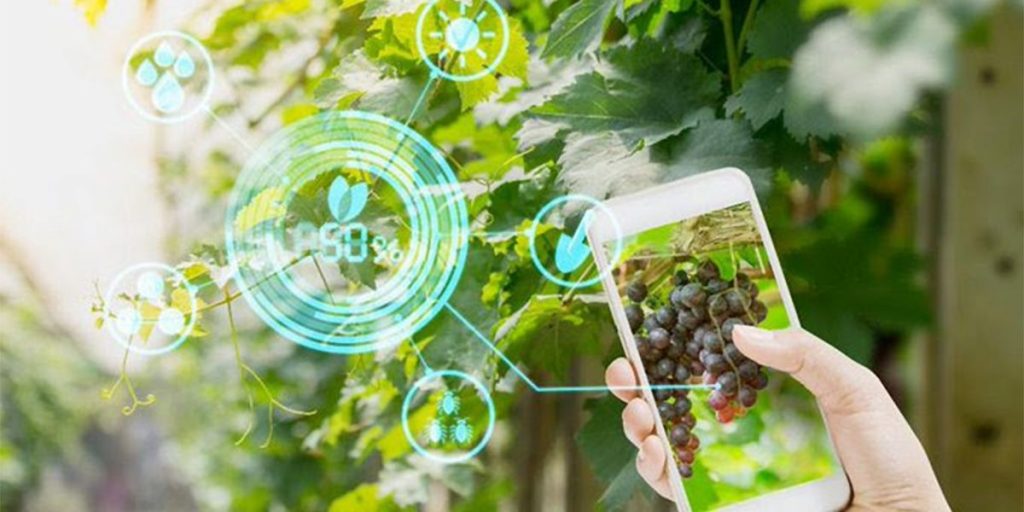Prasanna Kr. Srivastava speaks with Kunal Tiwari, who heads Digital Green, about agro technology and its future in India

Prasanna Kr. Srivastava caught up with Agribusiness management professional Kunal Tiwari, who currently leads Direct2Farmer vertical at Digital Green.
Digital Green focuses on market engagement for farmers and FPOs using digital platforms, research and innovation, scalable pilots, technology aggregation, data integration and exchange as well as ICT4AG program management while actively engaging partnership management with various Agritech solution providers to lead POCs and further scaling up. He had previously been associated with a few leading Agritech start-ups like Sourcetrace-USA, CropInIndia, Agrometrics-USA and AgriTask-Israel.
With nearly 15 years of experience in diversified Agriculture operations and recognized acumen in Smart Agriculture & food domain, Kunal has remarkably contributed in Agritech space. He has represented India at various national and International platforms advocating ICT4AG & GEO-ICT solutions in Agriculture.
Excerpts from the interview
How is agriculture being shaped using technology?
Technology is an important factor in determining the future of agriculture. Like most industries, the agricultural sector has also changed greatly from the early seventies. There are a lot of innovations in the mobile and IT space that have the potential to make a huge impact on farming.
When discussing the use of technology in agriculture, the terms “precision farming” and “smart farming” come up frequently. The former entails developing innovative production and management methods that make extensive and efficient use of data about a particular site and crop. Smart farming, often known as “Farming 4.0,” is a digitization idea that uses information and data technologies to optimize complicated farming processes. Digital Farming can be done through the installation of network-connected “smart” devices as part of IoT (Internet of Things) or they can be Software as a Service (SaaS) built agritech.
When it comes to the use of modern technology in the food and agriculture industry, India is at crossroads. Agriculture digitization is already witnessing a significant impact, even though it is still in its infancy. Digital technology is reshaping the world, from enhancing local ecosystems to making global agriculture more sustainable.
Can you tell us more about AI & ML-assisted agriculture practices?
Artificial Intelligence (AI)/Machine Learning (ML) technologies have undoubtedly aided in the transformation of agriculture into a more scientifically managed activity, with the ability to assess input requirements and predict output. These technologies are critical at a time when the agricultural system is becoming more complex and the pressure to produce more with less has never been greater.
For example: AI/ML plays an important role in the advancement of hyper-local weather forecasting. More accurate hyper localized weather predictions are becoming possible by combining massive data from weather satellites with continuously expanding weather stations and IoT sensors on the ground. This type of hyper-local weather data is increasingly being used to deliver targeted advisories to a specific cluster of villages. Using AI/ML technologies, various crop scenarios can be built using historic weather, forecasted weather, crop type, and crop stage, and those scenarios can be used to deliver targeted and precise actionable insights to farmers at the village level.
In your perspective, is technology truly beneficial to farmers, and do you have any facts to back up your assertion?
The emergence of farm technologies integrated with a strong information and communication technology (ICT) framework (digitalization) is still in its early stages in India, but it has enormous potential to improve agricultural performance and increase farmers’ income. The impact of technology in unlocking value for the people at the bottom of the pyramid and improving access to critical services are already visible. We at Digital Green have successfully demonstrated that a participatory process of engagement combined with simple technology solutions can enable small-scale farming communities to produce and share information on best practices for improved productivity and sustainable livelihoods. Initial pilot studies not only indicated a higher uptake of practices through the video-based approach, but also revealed that the Digital Green model was more cost-effective than classical systems of agricultural extension. Digital Green approach was at least ten times more efficient and seven times more likely to encourage farmers to adopt new practices compared to conventional agricultural extension systems.
Nowadays, technology is significantly helping farmers in several ways, including precise forecasting, data-driven decision making, and more. The changes have also resulted in a positive impact on the bottom line of most farmers and ultimately led to improved access to food products for consumers, at reasonable prices.
Is India equipped for this agricultural technology transition?
India’s present public policy regarding agriculture is focused on encouraging innovation and entrepreneurship, and out-of-box thinking towards achieving sustainable higher growth and income security in the farming sector.
In the recent years, the agriculture sector has attracted large conglomerates, leading IT companies, investors, and young innovators in India; the ecosystem for technology and digital solutions is expanding at an impressive pace.
Uptake of technologies at market prices in a sector that has traditionally been heavily subsidized remains challenging. The farmers are prompt at identifying what works in their interest and are ready to pay for it. Digital technologies offer the potential to achieve the necessary conditions for scale, with distributed low cost and customized delivery, creating a unique opportunity for private enterprises and innovations to thrive.
How do you envision “Digital Green” playing a part in this transition?
Digital Green is a not-for-profit international development organization that empowers smallholder farmers to lift themselves out of poverty by harnessing the collective power of technology and grassroots-level partnerships.
By 2021, Digital Green successfully empowered over 1.9 million small holder farmers, 90% of them women with knowledge on better agriculture practices.
Although digital technologies are becoming important for agriculture, the lack of digital adoption has been a serious concern, particularly among smallholder farmers. To overcome this challenge, the Digital Green approach is essentially a technology-enabled means of behavior change communication, which is cost-effective, scalable and brings together researchers, development practitioners and rural communities to produce and share locally relevant information. Digital Green’s participatory, video-based learning approach aims to engage the community to the greatest extent possible within the extension system. To do so, Digital Green integrates its processes within existing private and public extension systems to build the capacity of rural communities to produce and share short videos, i.e. it serves as a digital exchange platform.
While we continue with our flagship initiative of ‘community video approach to enhance efficiency and effectiveness of extension system’, in the recent years we have also invested in piloting and demonstrating various innovative and cross-cutting digital tools and processes to help contribute towards a sustainable and resilient Agri and food system by focusing on the livelihoods and income of small-scale farmers.
We have also developed a number of innovative digital platforms including Kisan Diary Enterprise app (produce aggregator and dashboard for FPOs), Data Wallet (to record farmer level activities on ground). In addition to this, we have also successfully piloted AI-enabled chatbot in WhatsApp to help farmers pull relevant information that they need, giving more choice and power to farmers to seek what they want, when they want and how they want.
What is your “go-to-farmer” strategy?
Typically, Digital Green partners with government agencies, independent NGOs or private sector agencies that help to identify progressive and enthusiastic members of the community, who then serve as champions for the extension efforts. At the block level, teams of three or four individuals are trained in video production skills using simple, handheld cameras. The skills encompass the entire gamut of processes for creating a video: from the development of a storyboard, to shooting the video with appropriate lighting, ensuring that it is culturally and aesthetically appropriate, editing and incorporating a soundtrack, and so forth.
These video production units at the block level act as a kind of hub to produce content. This content, in the form of short eight-to-ten-minute videos, is then shown to small groups of farmers in different villages across the block. At the village level too, selected community resource persons (CRPs) are trained in facilitation skills. These CRPs are responsible for screening videos in three or four villages within the block, and directly liaise with the community – answering their questions, clarifying doubts, and assisting farmers in the adoption of new practices. This forms a hub-and-spoke model, wherein content is developed at the ‘hub’, or block, and distributed across all the ‘spokes’, or individual villages.
In case you missed:
- None Found









